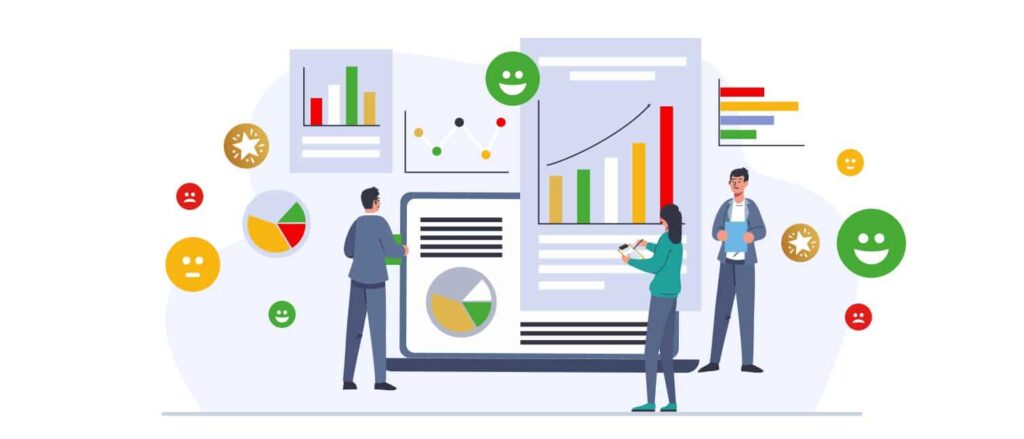ENHANCING ACCURACY IN SURVEY CLASSIFICATION: TECHNIQUES AND BEST PRACTICES
Introduction: Surveys are a fundamental tool for collecting valuable data and insights across various domains, including market research, social sciences, and customer feedback analysis. However, accurately classifying survey responses can be challenging due to the vast amount of unstructured and diverse data that needs to be processed. To enhance the accuracy of survey classification, researchers and practitioners have developed various techniques and best practices. In this article, we will explore some of these techniques and discuss the best practices that can significantly improve the accuracy of survey classification.
- Preprocessing and Data Cleaning: One of the initial steps in enhancing accuracy is preprocessing and cleaning the survey data. This involves removing irrelevant or duplicate responses, handling missing data, and standardizing the format of the data. Preprocessing techniques such as text normalization, stop-word removal, and stemming can help reduce noise and make the data more consistent, leading to improved classification accuracy.
- Feature Selection and Engineering: Choosing the right set of features is crucial for accurate survey classification. Feature selection techniques such as chi-square test, mutual information, and correlation analysis can help identify the most informative features. Additionally, feature engineering involves transforming raw data into meaningful representations that capture important characteristics. Techniques like word embeddings, n-grams, and topic modeling can provide valuable insights and improve classification accuracy.
- Supervised Learning Algorithms: Utilizing appropriate supervised learning algorithms is essential for accurate survey classification. Techniques such as Naive Bayes, Support Vector Machines (SVM), Random Forests, and Neural Networks have been widely employed in survey classification tasks. Each algorithm has its strengths and weaknesses, and selecting the most suitable one depends on the specific characteristics of the survey data and the classification goals.
- Ensemble Methods: Ensemble methods combine the predictions of multiple models to improve accuracy. Techniques like bagging, boosting, and stacking have proven to be effective in survey classification tasks. By leveraging the diversity of multiple models, ensemble methods can capture different aspects of the data and produce more accurate predictions.
- Cross-Validation and Evaluation Metrics: To ensure the reliability of survey classification models, it is crucial to perform cross-validation and use appropriate evaluation metrics. Cross-validation helps estimate the performance of the model on unseen data and prevents overfitting. Evaluation metrics such as accuracy, precision, recall, and F1-score provide insights into the model’s performance and allow for comparisons between different classification approaches.

- Handling Class Imbalance: In survey classification, class imbalance is a common challenge where some response classes may be underrepresented. This can lead to biased models and lower accuracy. Techniques like oversampling, undersampling, and SMOTE (Synthetic Minority Over-sampling Technique) can be employed to address class imbalance and ensure that the model learns from all response classes effectively.
- Regularization and Hyperparameter Tuning: Regularization techniques such as L1 and L2 regularization help prevent overfitting and improve generalization. Additionally, tuning hyperparameters of the classification models can significantly impact their accuracy. Techniques like grid search and random search can be employed to find the optimal combination of hyperparameters for the given survey classification task.
- Continuous Model Monitoring and Refinement: Survey classification is an iterative process, and models should be continuously monitored and refined. Regularly analyzing misclassified samples and updating the model based on feedback and new data can help improve accuracy over time. This can involve retraining the model, incorporating additional features, or considering more advanced techniques as the classification task evolves.
Conclusion: Enhancing accuracy in survey classification requires a combination of various techniques and best practices. Preprocessing and cleaning the data, selecting informative features, utilizing appropriate algorithms, employing ensemble methods, and addressing challenges like class imbalance are key steps in achieving accurate survey classification. Additionally, thorough evaluation, regularization, hyperparameter tuning, and continuous model monitoring contribute to refining and improving accuracy over time. By following these techniques and best practices, researchers and practitioners can unlock the full potential of survey data and obtain valuable insights for decision-making and analysis.


